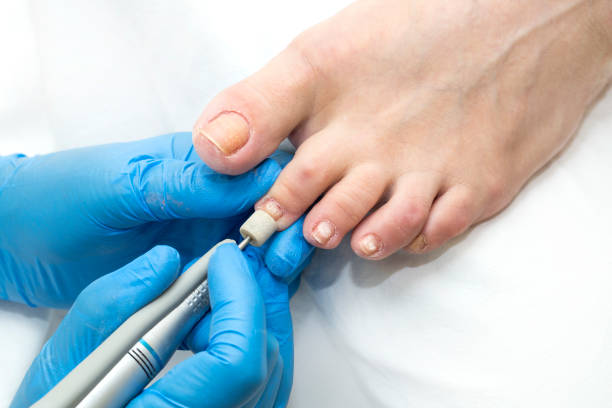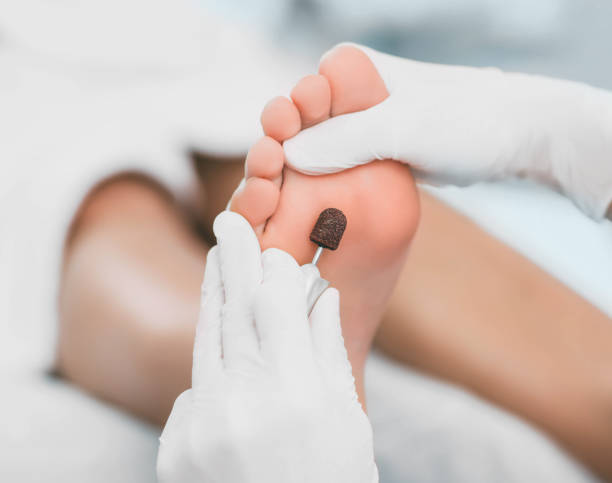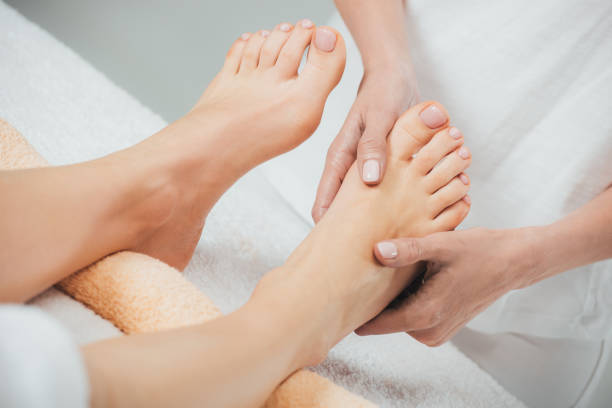The Advantages of Cold Laser Technology in Fungal Nail Therapy

Laser treatment is a safe and effective way to get rid of fungal nail infections. This treatment is also known as Low-Level Laser Therapy or Photobiomodulation.
This procedure uses a laser at a specific wavelength that only the fungus absorbs. This vaporizes the fungus, leaving the surrounding skin and nail tissue unaffected.
No Heat
The Lunula laser uses a dual-wavelength approach that helps to destroy the fungus that causes onychomycosis (nail fungus). The blue (405 nm) wavelength activates the nail’s photoreceptors and changes the structure of the outer wall. This weakens the fungus, allowing the body’s natural immune system to attack and destroy it. The red (635 nm) wavelength stimulates endogenous mechanisms and enhances the immunological function of resident neutrophils and macrophages, thus helping to accelerate new clear nail growth at the base of the nails.
This process is entirely painless and requires no downtime or limit on activities after treatments. Additionally, unlike other fungal nail therapy methods that only mask the symptoms, cold laser therapy at Adelaide Fungal Nail Clinic actually eliminates the fungus from under the fingernails.
It’s important to understand how lasers work when considering the treatment of onychomycosis or any other condition involving the nails. When a laser beam is directed into the nail, it penetrates through, under, and around the fungus. The fungus absorbs the energy and the resulting chemical change in the fungus causes it to decompose. The nails and surrounding skin are unaffected by this process because the laser only targets the fungus, not the underlying tissues. Research has shown that this treatment also triggers tissue growth, increases blood flow to the area, and decreases pain levels.2
No Pain
In addition to killing the fungus on the nail, laser therapy also increases blood flow and provides nutrients to the area. This encourages the nail to heal faster and prevent future infections. The cold laser treatment is completely painless. However, it is important to set up the laser exactly right for it to work effectively. Over-the-counter devices may not be accurate and could cause the fungus to grow back.
A patented technology behind a laser system uses only cold laser energy (no heat) and utilizes pulses of light to initiate true physiologic responses. The pulsing of the laser allows the light to be absorbed deeper into the tissue, reaching the root of the problem at a cellular level and causing a strong pain reduction effect.
No Side Effects
There are many types of laser treatments out there that produce heat and can cause real damage. The cold laser in the Lunula Nail Therapy device is non-thermal, so there are no risks involved with this type of treatment.
It has been shown that the light produced by this type of laser can be very effective in treating nail fungus. One study that involved the use of a 0.5 ms Nd:YAG laser showed clear nails in 96% of patients after six treatments. This is a very high percentage of positive results and shows that this treatment is very safe.
Other studies have found similar outcomes in treating fungus in the nails. This type of treatment has also been able to treat other issues in the foot and ankle, such as nerve pain from peripheral neuropathy.
In addition, this type of laser treatment is a much more convenient option than taking oral medication, using topical solutions, or having surgery to remove the infected nail. There are no risks associated with this type of treatment, so it is a great alternative for people who want to get rid of their fungal nail infection once and for all. The only drawback of this treatment is that it takes time for the new nail to grow in, so people will have to wait a few months for full results.
No Recovery Time
Lasers emit light energy that is absorbed by water molecules within the tissue. This energy causes the ions to vibrate at a very high rate, which results in the disintegration of the fungal cells that are responsible for nail fungus. The fungus is then eliminated by the body’s natural immune system.
The fungus that is under your nails can be caused by many different types of fungi, yeasts, or molds. Small cracks in your nails allow these germs to enter the nail and cause an infection. Fungal toenail infections are known as onychomycosis and can lead to brittle, discolored, thickened nails that look dull or ragged.
The Lunula laser is computer-controlled to evenly rotate the combination of two laser wavelengths on your toenails, nail beds, and surrounding skin. A blue laser beam targets and kills the fungus while a red laser beam stimulates your own natural immune system to strengthen and improve your nails.
Compared to topical antifungals, there is no downtime or restrictions on activity following a laser treatment. However, it may take months to see a nice fungus-free nail grow, so you should continue with preventative measures such as shoe and sock disinfection, and avoid wearing tight shoes and socks.




